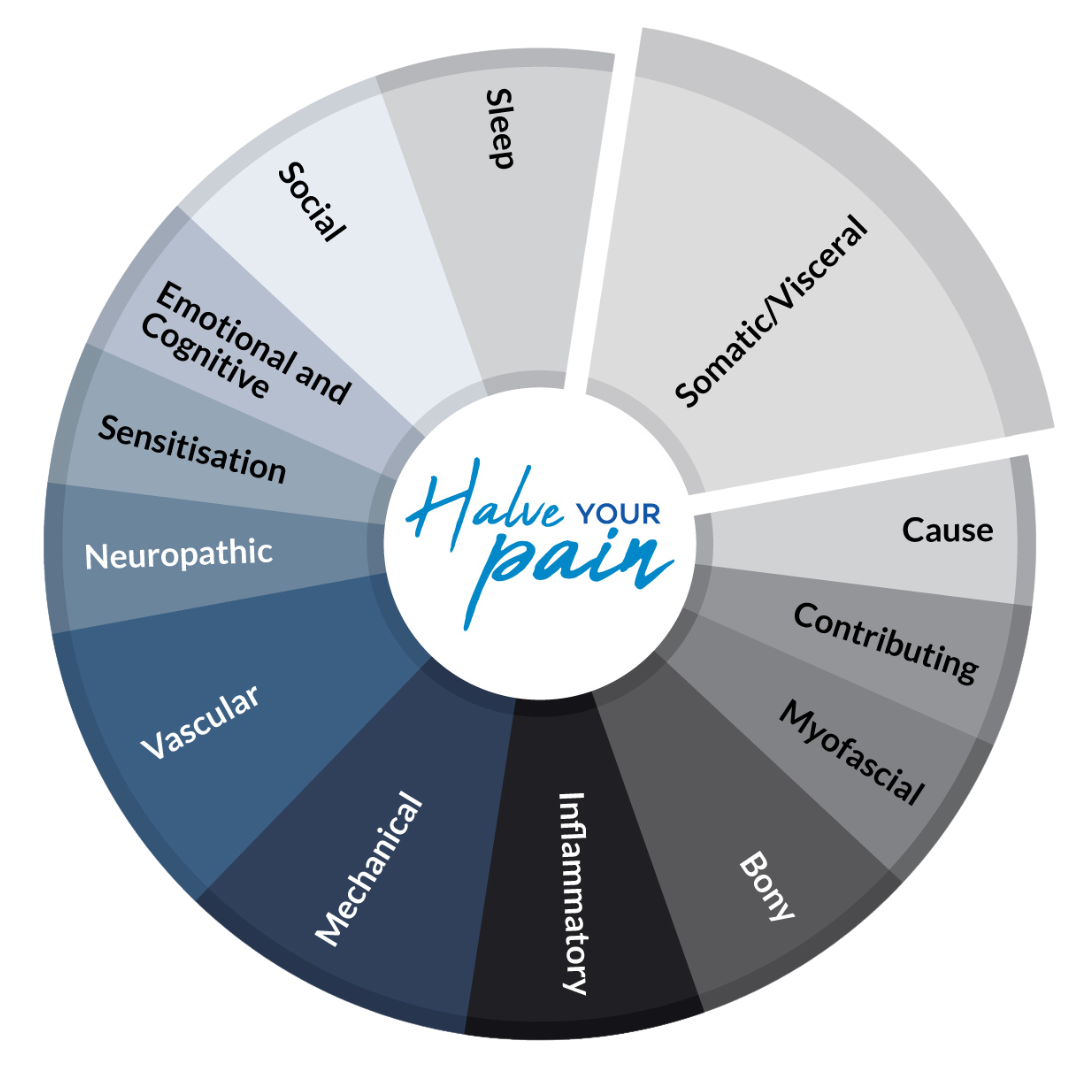
DAN’S APPROACH
TO PAIN
Pain is very hard to describe for everyone. It is commonly summarised as “It just hurts, Doc”. But if you think about it, pain is made up of many different sensations and emotions.
It may just be an ache for some people, but for others it can burn, stab, be intermittently sharp, be associated with muscle tightness, pins and needles, or a myriad of other symptoms.
There may also be an underlying cause that contributes to the pain and consequences of it, which generally impact how you sleep, how you feel, and how you do the things you love.
The Pain Pie.
The Pain Pie is simple a way to think about pain. There is no magic research to it, it is just a means of trying to explain that pain is not just one sensation. From a technical perspective, the Pain Pie is made up of the 3 components of the pain system, and each component is broken into pieces of the pie. The blue sections are pain arising from body parts, the white sections highlight pain arising from nerves, and the dark grey sections include pain coming from or amplified by the spinal cord and brain.
Each piece of the pie has its own characteristics and treatment options. Some of these are distinct, others overlapping.
The Pain Pie is also an attempt at not getting caught in thinking there is just one solution to pain eg. “I have an operation that will fix you” or “All you need to do is think differently about your pain”. These approaches may form important parts of helping treat your pain, but they may not result in significant decreases in pain when used alone. What’s more, if these don’t work, it doesn’t mean there are not more options. The Pain Pie can be used to identify all the pieces of your pain, rather than treating just one piece. For example, we can treat a patient with inflammatory pain by prescribing anti-inflammatories and only decrease their pain by 10-20%. Or, we can treat several pieces of the pain pie at once with the aim to shrink the entire pie and get a greater overall improvement in pain.
DIFFERENT TYPES OF PAIN.
-
“Soma” is another word for “body”. You can think of “somatic pain” as pain arising from a “body part”. The big question is always “Which part?” Somatic pain can be described as aching, broad, heavy, sore, sharp, pressure or throbbing.
LEARN MORE ABOUT SOMATIC PAIN
-
Myofascial features are muscle tightness and trigger points. Trigger points are commonly underestimated as sources of pain. They can create focal pain and pain that will radiate over a wide area that imitates, neuropathic and somatic pain.
LEARN MORE ABOUT MYOFASCIAL PAIN
-
Inflammatory pain is worse in the morning and after rest. It is associated with stiffness and swelling, improves with heat, is worse with cold and commonly transiently responds to anti-inflammatories. Inflammatory pain can also wake you or make it difficult getting to sleep, and will change with the weather (eg your knee may be able tell you when it is about to rain).
LEARN MORE ABOUT INFLAMMATORY PAIN
-
Bony pain is a little more difficult to define. This is pain on impact (eg you stand up and get pain, you sit down, it goes away), pain on pushing over the bone, and pain that wakes you at night. It can be very difficult to identify this type of pain in lower backs or necks, and is more easily recognised in knees, legs and feet.
Bone pain can be address with decreasing the load on the bone and allowing it to settle, as you would with treating a fracture. In addition, bisphosphonates, a type of osteoporosis medication have also been shown to be quite useful to settle the bone pain related to osteoarthritis.
-
Item description
-
Item description
-
Item description
-
Item description



